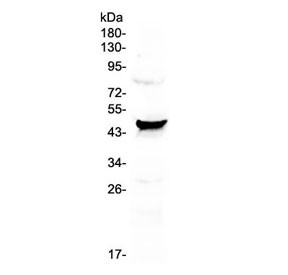Cookie-Einstellungen
Diese Website benutzt Cookies, die für den technischen Betrieb der Website erforderlich sind und stets gesetzt werden. Andere Cookies, die den Komfort bei Benutzung dieser Website erhöhen, der Direktwerbung dienen oder die Interaktion mit anderen Websites und sozialen Netzwerken vereinfachen sollen, werden nur mit Ihrer Zustimmung gesetzt.
Konfiguration
Technisch erforderlich
Diese Cookies sind für die Grundfunktionen des Shops notwendig.
"Alle Cookies ablehnen" Cookie
"Alle Cookies annehmen" Cookie
Ausgewählter Shop
CSRF-Token
Cookie-Einstellungen
FACT-Finder Tracking
Individuelle Preise
Kundenspezifisches Caching
Session
Währungswechsel
Komfortfunktionen
Diese Cookies werden genutzt um das Einkaufserlebnis noch ansprechender zu gestalten, beispielsweise für die Wiedererkennung des Besuchers.
Facebook-Seite in der rechten Blog - Sidebar anzeigen
Merkzettel
Statistik & Tracking
Endgeräteerkennung
Kauf- und Surfverhalten mit Google Tag Manager
Partnerprogramm
| Artikelnummer | Größe | Datenblatt | Manual | SDB | Lieferzeit | Menge | Preis |
|---|---|---|---|---|---|---|---|
| NSJ-R32970 | 100 µg | - | - |
3 - 10 Werktage* |
755,00 €
|
Bei Fragen nutzen Sie gerne unser Kontaktformular.
Bestellen Sie auch per E-Mail: info@biomol.com
Größere Menge gewünscht? Bulk-Anfrage
Bestellen Sie auch per E-Mail: info@biomol.com
Größere Menge gewünscht? Bulk-Anfrage
0.5mg/ml if reconstituted with 0.2ml sterile DI water. NOV (nephroblastoma overexpressed), also... mehr
Produktinformationen "Anti-CCN3 / NOV / IGFBP9 (C-Terminal Region)"
0.5mg/ml if reconstituted with 0.2ml sterile DI water. NOV (nephroblastoma overexpressed), also known as CCN3, is a matricellular protein that in humans is encoded by the NOV gene. The protein encoded by this gene is a small secreted cysteine-rich protein and a member of the CCN family of regulatory proteins. CNN family proteins associate with the extracellular matrix and play an important role in cardiovascular and skeletal development, fibrosis and cancer development. Protein function: Immediate-early protein playing a role in various cellular processes including proliferation, adhesion, migration, differentiation and survival (PubMed:15181016, PubMed:15611078, PubMed:12695522, PubMed:21344378, PubMed:12050162). Acts by binding to integrins or membrane receptors such as NOTCH1 (PubMed:12695522, PubMed:21344378, PubMed:15611078). Essential regulator of hematopoietic stem and progenitor cell function (PubMed:17463287). Inhibits myogenic differentiation through the activation of Notch-signaling pathway (PubMed:12050162). Inhibits vascular smooth muscle cells proliferation by increasing expression of cell-cycle regulators such as CDKN2B or CDKN1A independently of TGFB1 signaling (PubMed:20139355). Ligand of integrins ITGAV:ITGB3 and ITGA5:ITGB1, acts directly upon endothelial cells to stimulate pro-angiogenic activities and induces angiogenesis. In endothelial cells, supports cell adhesion, induces directed cell migration (chemotaxis) and promotes cell survival (PubMed:12695522). Plays also a role in cutaneous wound healing acting as integrin receptor ligand. Supports skin fibroblast adhesion through ITGA5:ITGB1 and ITGA6:ITGB1 and induces fibroblast chemotaxis through ITGAV:ITGB5. Seems to enhance bFGF-induced DNA synthesis in fibroblasts (PubMed:15611078). Involved in bone regeneration as a negative regulator. Enhances the articular chondrocytic phenotype, whereas it repressed the one representing endochondral ossification (PubMed:21871891). Impairs pancreatic beta-cell function, inhibits beta-cell proliferation and insulin secretion. Plays a role as negative regulator of endothelial pro-inflammatory activation reducing monocyte adhesion, its anti- inflammatory effects occur secondary to the inhibition of NF- kappaB signaling pathway (PubMed:21063504). Contributes to the control and coordination of inflammatory processes in atherosclerosis. Attenuates inflammatory pain through regulation of IL1B- and TNF-induced MMP9, MMP2 and CCL2 expression. Inhibits MMP9 expression through ITGB1 engagement (PubMed:21871891). [The UniProt Consortium]
| Schlagworte: | Anti-NOV, Anti-NovH, Anti-CCN3, Anti-IBP-9, Anti-IGFBP-9, Anti-Protein NOV homolog, Anti-CCN family member 3, Anti-IGF-binding protein 9, Anti-Insulin-like growth factor-binding protein 9, Anti-Nephroblastoma-overexpressed gene protein homolog, CCN3 Antib |
| Hersteller: | NSJ Bioreagents |
| Hersteller-Nr: | R32970 |
Eigenschaften
| Anwendung: | WB, IHC (paraffin) |
| Antikörper-Typ: | Polyclonal |
| Konjugat: | No |
| Wirt: | Rabbit |
| Spezies-Reaktivität: | human, rat |
| Immunogen: | Amino acids 334-357 (HTNCPKNNEAFLQELELKTTRGKM) were used as the immunogen for the CCN3 antibody. |
| Format: | Purified |
Datenbank Information
| KEGG ID : | K23571 | Passende Produkte |
| UniProt ID : | P48745 | Passende Produkte |
| Gene ID | GeneID 4856 | Passende Produkte |
Handhabung & Sicherheit
| Lagerung: | +4°C |
| Versand: | +4°C (International: +4°C) |
Achtung
Nur für Forschungszwecke und Laboruntersuchungen: Nicht für die Anwendung im oder am Menschen!
Nur für Forschungszwecke und Laboruntersuchungen: Nicht für die Anwendung im oder am Menschen!
Hier folgen Informationen zur Produktreferenz.
mehr
Hier kriegen Sie ein Zertifikat
Loggen Sie sich ein oder registrieren Sie sich, um Analysenzertifikate anzufordern.
Bewertungen lesen, schreiben und diskutieren... mehr
Kundenbewertungen für "Anti-CCN3 / NOV / IGFBP9 (C-Terminal Region)"
Bewertung schreiben
Loggen Sie sich ein oder registrieren Sie sich, um eine Produktbewertung abzugeben.
Zuletzt angesehen












